Instructions
Aims and scope
Psicoespacios is a biannual open access electronic publication, whose main objective is the dissemination of scientific work in psychology and interdisciplinary dialogue with other social and human sciences. The journal serves as a channel for the expression of peer-reviewed research papers, publishing both theoretical and applied papers.
An editor is responsible for receiving and evaluating all original manuscripts, according to the general parameters:
- Structure and sections of a scientific article.
- Addresses a topic relevant to the scope of the journal.
- Originality, timeliness, relevance, and scientific quality.
- The content is of interest to the local, national, and international scientific/academic community.
- Contribution to the development of knowledge.
Sections
Research
Texts that provide research results for the first time and whose writing and publication follow specific standards, accepted by the international scientific community, which guarantee the effective communication of scientific information worldwide. Its structure includes introduction, methods, materials, results, conclusions, and references.
Review or meta-analysis
Documents that analyze, systematize, and integrate the results of published and unpublished research to report on progress and development trends. They are characterized by a careful bibliographic review of at least 50 references.
Reflections
Texts reporting research results from an analytical or critical perspective, on a specific topic, using original scientific sources.
Peer review process (double-blind)
Submission of a paper to the journal does not guarantee approval. Submissions undergo an editorial process that takes place in several phases. All papers undergo an initial screening by the Editorial Committee, which determines whether they are relevant for publication. If the paper meets the thematic and formal requirements of the journal, it will be sent for peer review by experts in your field, preferably independent of the journal, for an in-depth academic evaluation. If the expert insights of the referees are favorable, the production process begins in order of submission.
Peers are experts in their area of knowledge, chosen by the journal or suggested by the researchers, who give written insights on the relevance and validity of the content to improve the paper. Reviewers must guarantee the confidentiality of the information reviewed and, therefore, may not copy or use data or important aspects of its content. Their evaluations must be clear and substantiated. In case of suspected misconduct on the part of the author(s), they must inform the editor confidentially. During the review, peers will report any conflicts of interest, advise the editor and, if necessary, withdraw from the process.
The evaluation process is double blind to avoid any conflict of interest. The authors do not know the identity of the reviewer (anonymity is essential) and, likewise, the reviewers do not know the identity of the authors.
Peers are selected by the Editorial Committee and their evaluation must follow the established format. Although authors may suggest referees, the final decision on referees will be made by the Editorial Committee of the journal.
The reviewers will look for the following aspects:
- Appropriateness of title, objectives, hypothesis, method, results, and discussion.
- The theoretical background is relevant.
- Quality writing.
- References are up to date and relevant.
- Follow APA citation guidelines.
- The research meets conceptual novelty, and its contributions are relevant to the field of knowledge.
If the recommendations of the two reviewers clearly differ, it is up to the Editorial Committee to make the final decision. The results of the academic peer review process will be final in all cases.
The result of the evaluation may be: 1) 1) may be published without modifications; 2) may be published with modifications of form; 3) may be published with modifications of content; 4) may be published with modifications of form and content; 5) corrections of form and content must be submitted for re-evaluation; and 6) may not be published.
Standards for submission of articles
Heading
Title
The title should be brief and affirmative, without question marks or exclamation points. A maximum of 15 words is recommended. In the case of research articles, it should be a concise statement of the main topic of the research and the main variables. The title should be included in Spanish and English. If there is a footnote explanation, it should be marked with an asterisk immediately after the title.
Author information
Authors must provide their full name and full details of their institutional affiliation: institution, city, country, e-mail address and ORCID identifier.
Abstract and keywords
The abstract is a brief and detailed description of the text. Between 200 and 250 words is recommended. It should be written in the third person and in the present tense, and contain: objective, methodology, results, discussion, and conclusions; it should be written in Spanish, English and Portuguese.
Keywords should be between four (4) and six (6), showing the main themes and concepts of the article, according to specialized thesauri. The title, abstract and keywords must be written in Spanish, English and Portuguese.
The keywords accepted by international databases must be standardized. To do so, please refer to the following links:
- VHL Regional Portal: https://bvsalud.org/en/
- Health Sciences Descriptors: https://decs.bvs.br/I/homepagei.htm
- UNESCO Thesaurus: http://databases.unesco.org/thessp/
- National Library of Medicine: http://www.ncbi.nlm.nih.gov/mesh
Body of the article
If the article reports on scientific research, it should also contain introduction, methods, results, discussion, conclusions and, if applicable, recommendations. Case studies should include methodological aspects. These same sections count for reviews or meta-analyses.
Introduction
Contains the background and development of the problem. It is brief and should provide only the necessary explanation to understand the text. It should not include tables or figures unless they are essential. The last paragraph should clearly state the objective of the paper.
Methodology
Clearly describes the population, identifying sex, age and other important characteristics. It should specify how the data were collected. Reference is made to the type of study and the type of analysis used (descriptive, epidemiological, experimental, clinical trial, etc.) and the system of allocation of subjects. In addition, it should identify the methods, evaluation instruments, treatments, among others, and indicate the statistical package used.
Results
They should follow a logical sequence, clearly supported by tables and figures. Not all data should be presented in this section. It is important to highlight the most relevant observations.
Discussion and conclusions
Highlights the new and important aspects of the study and its conclusions. Does not repeat in detail the data from the introduction or the results. Relates the results to other relevant studies and indicates implications and limitations. Also relates the conclusions to the objectives of the study and, if necessary, includes recommendations.
References
The references section is placed at the end of the document, with the title "References", including only the sources that support the research and that have been cited in the body of the text, according to APA Standards 7th edition.
Copyrights
Authorship
Based on the four criteria of the International Committee of Medical Journal Editors (ICMJE), Psicoespacios adopts the following definition of an author of a scientific paper:
- Make substantial contributions to the conception or design of the paper or to the acquisition, analysis, and interpretation of the data of the work.
- The drafting of the paper or the critical review of its content.
- Final approval of the version for publication.
- Be responsible for all aspects of the work, ensuring that all issues relating to the accuracy or completeness of the text are investigated and confirmed.
Only those who meet these four criteria should be listed as authors of a scientific paper. This implies that all co-authors have a shared responsibility for the work, relying on the integrity of the contributions of their collaborators.
Contributors to the paper who do not meet these four criteria cannot appear as authors but should be acknowledged in a footnote with their names and their contribution to the research or paper.
Authors, and not the journal, are responsible for determining that all persons named as authors meet the four criteria. Authors decide the order of appearance, according to the importance of their contributions. When submitting a paper to the journal, an information form is also filled out, where the authors (in case there is more than one), provide their data in the established order, for which they are responsible.
Statement and submission
Papers submitted must be accompanied by a cover letter signed by all authors, stating that the manuscript is original, that it has not been previously published or simultaneously submitted to another journal or media, and that all authors have read and agree with its contents.
The study from which the manuscript is derived must have the informed consents of all participants and the endorsement of the institutional ethics committee. All this should be specified in the methodology section, as well as the respective references, in the case of data or tests provided or designed by other authors.
Authors are responsible for the content and for their effective participation as authors of the text.
Once the manuscript is approved, the authors send a letter indicating that the author or authors grant the Institución Universitaria de Envigado the right for their paper and materials to be reproduced, published, edited, communicated and transmitted publicly, in any form or medium, as well as their dissemination and visibility, including making them available to the national and international public, through electronic media, for exclusively scientific, cultural and dissemination purposes, on a non-profit basis.
Creative Commons License
Papers published in the journal Psicoespacios are licensed under a Creative Commons Attribution-NonCommercial-ShareAlike License which states that:
Attribution — You must give appropriate credit, provide a link to the license, and indicate if changes were made.
NonCommercial — You may not use the material for commercial purposes.
ShareAlike — If you remix, transform, or build upon the material, you must distribute your contributions under the same license as the original.
Ethics issues
In compliance with its main objective of contributing to quality knowledge, and in accordance with the Committee on Publication Ethics (COPE), Psicosespacios adheres to the Principles of Transparency and Best Practices in Academic Publishing and to the ethical standards and conflict resolution procedures that may arise in the process.
Therefore, the journal's editorial team will ensure that all players (editors, reviewers, and authors) abide by ethical standards throughout the editorial process.
To avoid research misconduct, the authors are committed to:
- Not to commit fraud.
- Not to unduly experiment with or on human beings.
- Avoid serious professional misconduct such as: copyright infringement, simultaneous submission, duplicate publication, conflict of interest, authorship conflicts or fragmentation.



